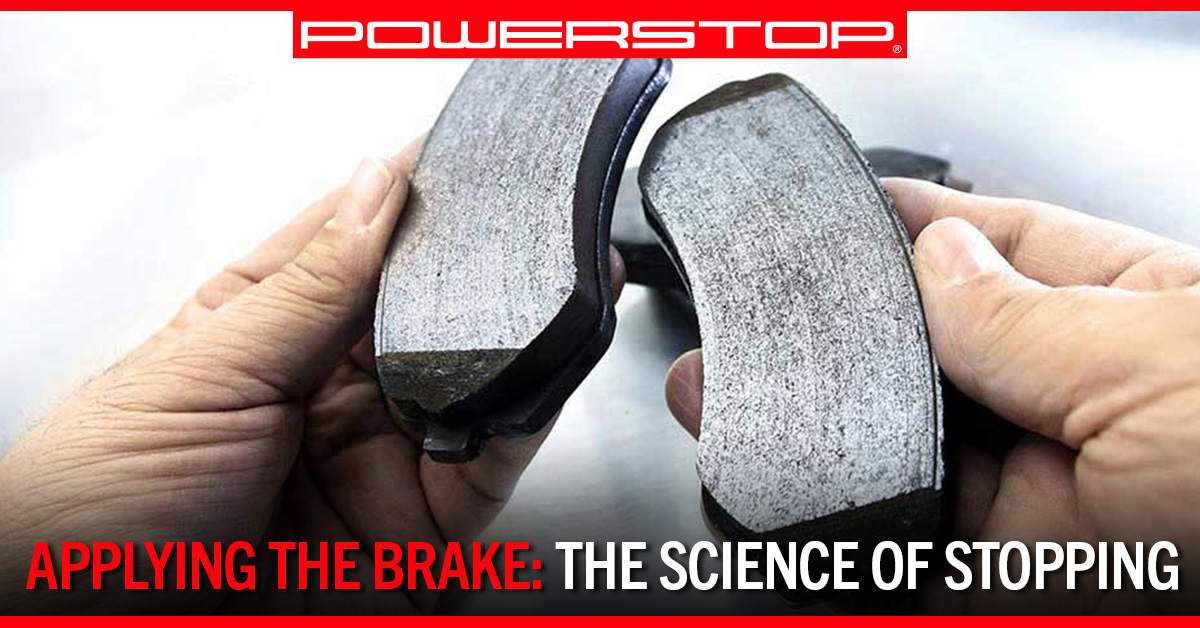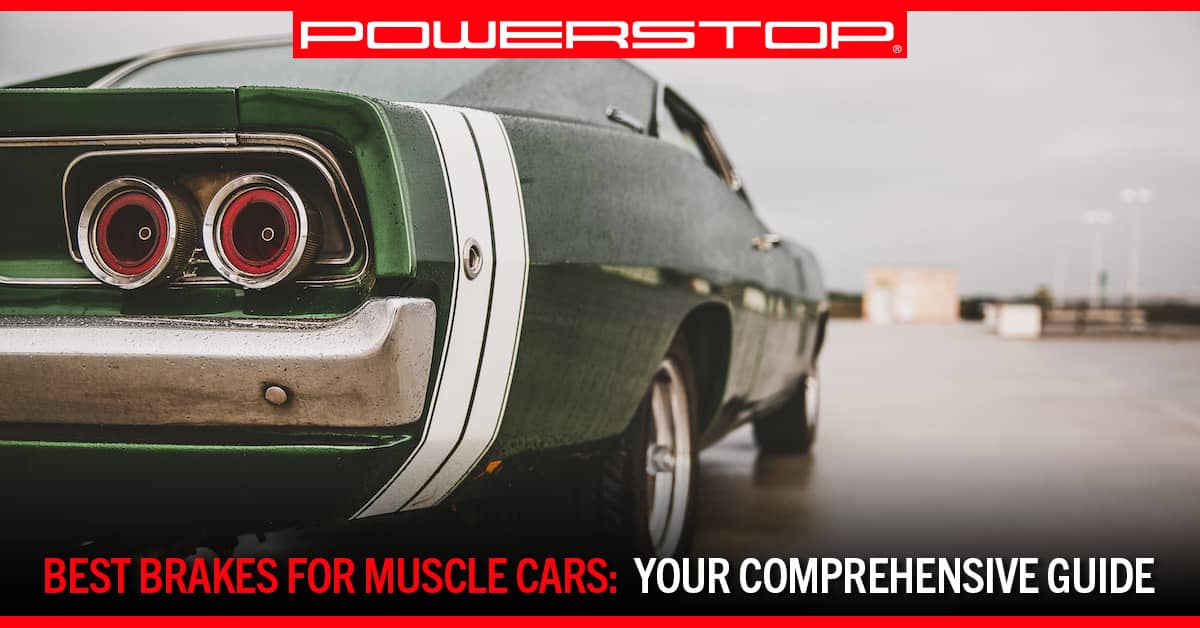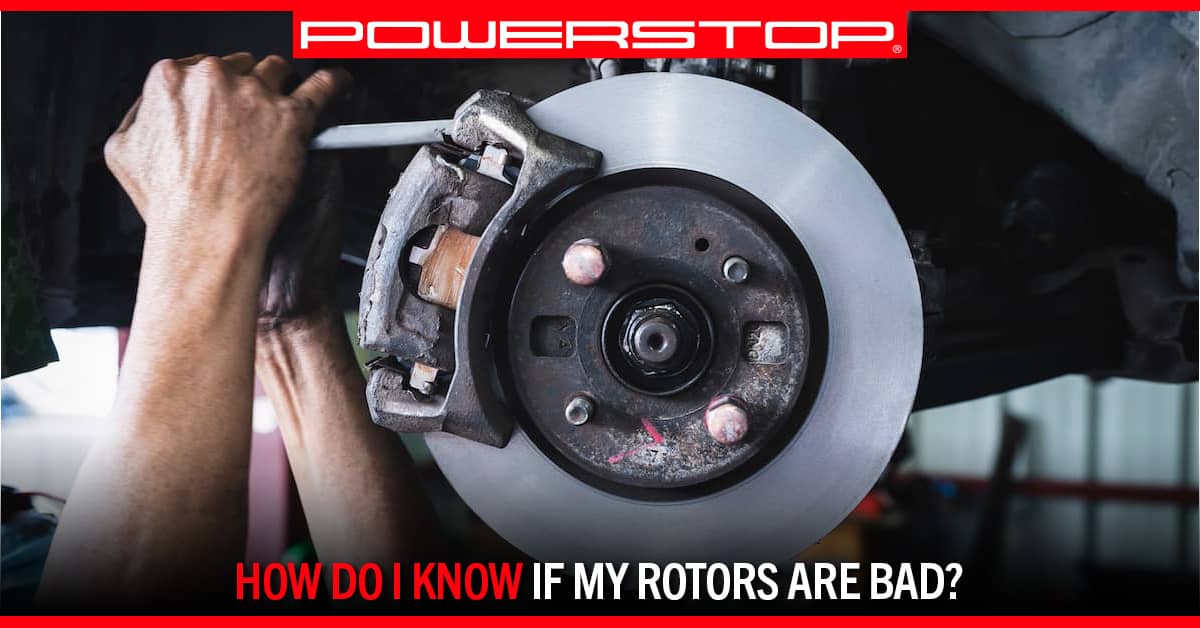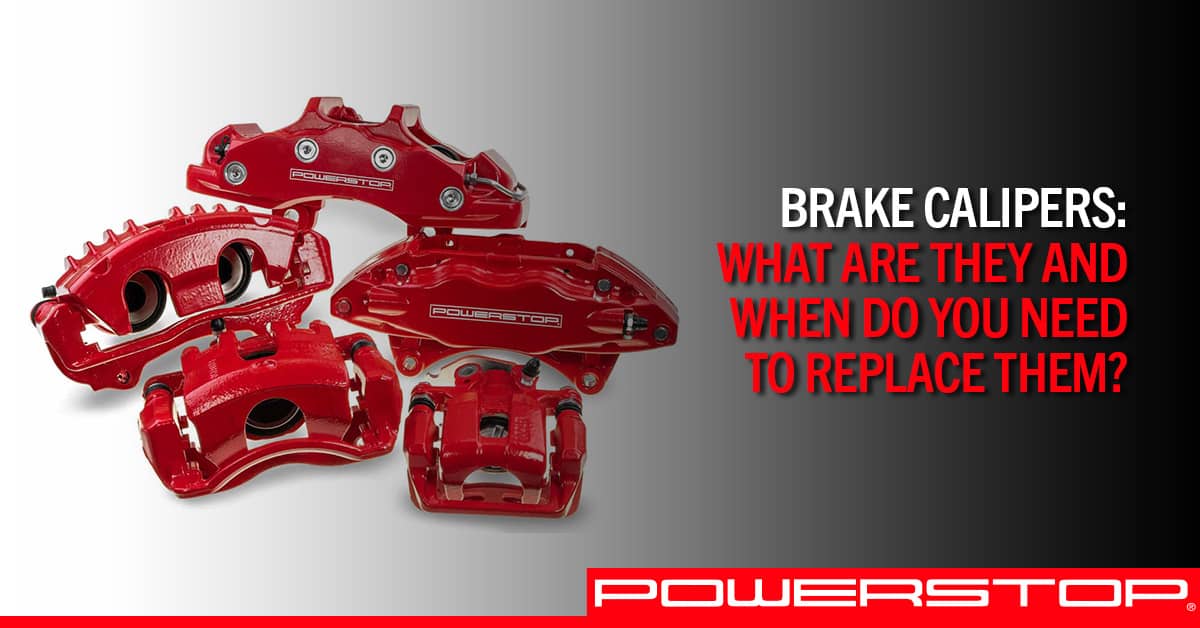
When you apply the brakes while driving and notice a wobbly pulsation coming from the brake pedal, you should determine the cause of the pulsating feeling.
Pulsating brakes can be felt in a shaking steering wheel, a pulsating brake pedal, or in the seat as it vibrates when braking. If you feel the brakes pulsate when coming to a stop, it’s most likely an issue with the brake rotors.
Applying the Brake: The Science of Stopping
It is hard to imagine the energy required to stop a vehicle traveling at 110 mph. Kinetic Energy is ½ mass times the velocity squared: KE = ½ mv2. Stopping a 2500 lb car requires 352,800 ft-lb of energy, the equivalent of dropping the car from an 11-story building.
When you stop, almost all of this energy is converted into heat through the rotor in a very short time. Brake rotors are designed to get hot, often in excess of 1400 degrees F.
Contrary to popular belief, the temperature does not cause the rotors to warp, and this is not the reason why you get pulsating brakes.
So what causes the brake pedal to pulse or feel like it’s vibrating?
Main Cause of Pulsing Brake Pedals
The answer to what is causing your pulsing brake pedal lies in understanding how friction works, and how high spots form on the rotor to cause the pulsating brakes. There are two primary mechanisms of friction at work during the stop: adherent friction and abrasive friction.
- Adherent Friction: For adherent friction, a thin layer of material is continuously transferred between the brake pad and the rotor. The breaking of the chemical bonds creates a resistant force to stop the vehicle.
- Abrasive Friction: Abrasive friction is the mechanical wearing of the rotor and friction surface, like sandpaper on wood.
High Spots on the Rotor
Brake pads use both adherent and abrasive friction, but at higher temperatures, adherent friction is what stops the car. The brake pad deposits material on the rotor, and as the pad gets hot, more material gets deposited. These deposits are caused by the resin (glue) in the pad.
All brake pads use a binding resin that holds the friction component materials together. This resin turns to liquid as the pads get hot, and the resin material along with some other material in the pad gets deposited on the rotor.
On overheated rotors, you can sometimes see the glazed resin material. It can look like someone brushed syrup on the rotor. The resin glazing forms a high spot on the rotor surface.
Another way to form a high spot on the rotor is if you clamp down on the brake after a hot stop.
When the brake pad gets hot, it wants to transfer friction material to the rotor and it does not care if the rotor is stationary or rotating. If you are at a standstill, the pad will imprint material on the rotor in the shape of the pad. The next time you brake, as the pad passes over the high spot, the temperature increases relative to the rest of the rotor. This causes more material to get deposited on this spot until it gets high enough to cause pulsating brakes.
It does not take a lot of material to cause this brake judder, only .0007 inches is enough to start to feel the pulsation.
PowerStop friction is engineered with lower resin content to maintain a uniform boundary layer of friction on the rotor.
Another way to prevent glazing or non-uniform friction deposits is to install drilled & slotted rotors. Powerstop’s drilled & slotted rotors help keep the pad cooler to prevent pad glazing.
How to Prevent Brake Pedal Pulsation
To prevent your brake pedal from pulsing, consider taking the following steps:
Step1: Make 5 Moderate to Aggressive Stops (from 40 mph to 10 mph)
Make five moderate to aggressive stops from 40 mph down to 10 mph in rapid succession. Do not come to a complete stop and do not let the brakes cool.
If you’re forced to stop, either shift into neutral or give room in front so you can allow the vehicle to roll slightly while waiting for the light. The rotors will be very hot and holding down the brake pedal will allow the pad to create an imprint on the rotor. This is where the judder can originate from.
Step 2: Make 5 Moderate Stops (from 35 mph to 5 mph)
Make five moderate stops from 35 mph to 5 mph in rapid succession without letting the brakes cool. You should expect to smell some resin as the brakes get hot.
Step 3: Drive for As Long as Possible Without Coming to a Stop
Once you have made a succession of moderate stops, drive around for as long as possible without excessively heating the brakes and without coming to a complete stop (Try for about 5 minutes at moderate speed). This is the cooling stage. It allows the heated resin in the brake pads to cool and cure.
After the brakes have cooled to standard operating temperature, you may use the brakes normally.
Have a Question? PowerStop Can Help
At PowerStop, we are committed to providing top-quality performance brakes for every vehicle on the road. If you have a question about any of our products, contact us today online or toll-free at (888) 863-4415. Our customer service team is available to answer your questions Monday through Friday from 8 a.m. to 5 p.m. (CST). Se habla español.
Back



